Note: The posters on the “Gender Roles” page were directed toward white women. There is an evident lack of substantive record of posters aimed toward Black women, Indigenous women, and other women of color. The same limitation applies to the “Race Thinking” page. Further research should conduct a deeper dive to excavate this information.
An Overview
World War I, AKA the “Great War”, was waged on an unprecedented scale for the United States. It was America’s first total war – the war effort touched every aspect of life and civilians were asked to contribute more than even before. World War 1 started right after the assassination of Archduke Franz Ferdinand of Austria. It was fought between the Central Powers (Germany, Bulgaria, Austria-Hungary, and the Ottoman Empire) and the Allied Powers (Great Britain, France Russia, Italy, Romania, Canada, Japan, and the United States). WWI is known to be especially deadly because of new military technology/weapons and trench warfare.
Race Thinking
The U.S. government issued propaganda for only white America until 1918 when it reached out to Black newspapers. The Black community privately published their own posters to advocate for their separate interests in the war, namely civil rights.
U.S. government-issued propaganda posters still reflect race thinking at the time of WWI. The posters predominantly consist of white people. Why is this? The U.S. government had to unite a diverse population with different interests. To do this, its solution was to erase the differences. The white people in the posters were supposed to be interpreted as universal. But this just resulted in whiteness being enforced as the norm and as the patriot1.
The government used propaganda posters to unite the country against the Germans. They did this by racializing German soldiers to solidify them as the enemy.
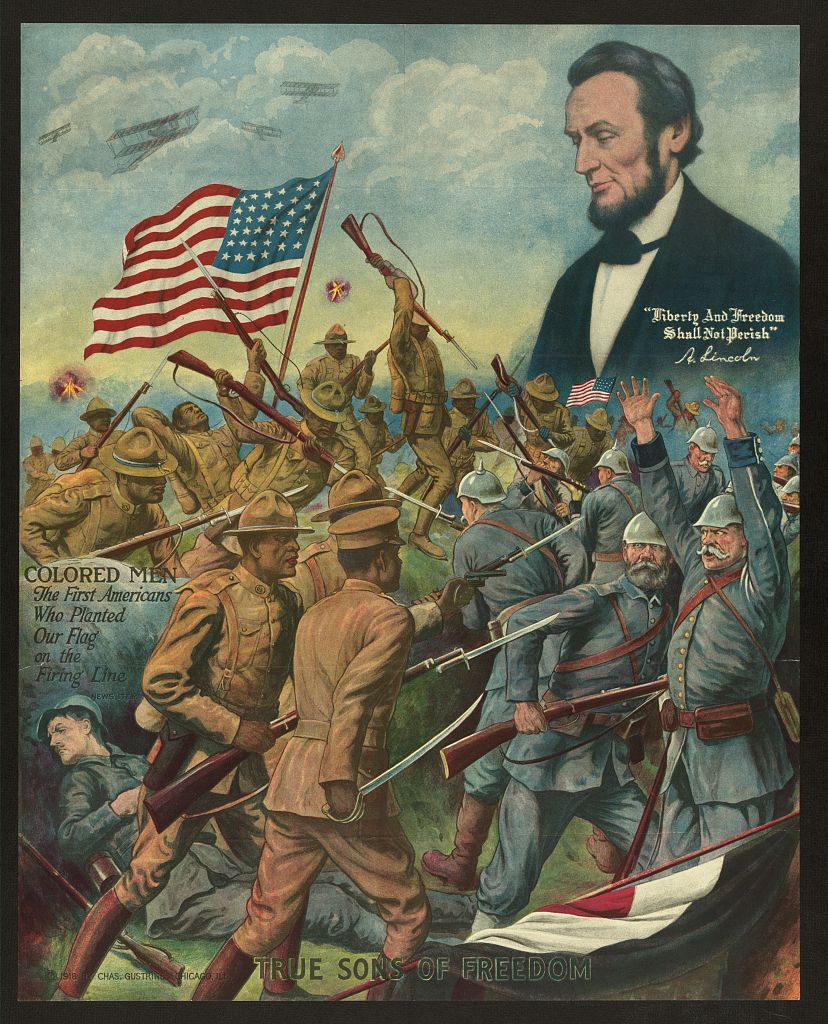
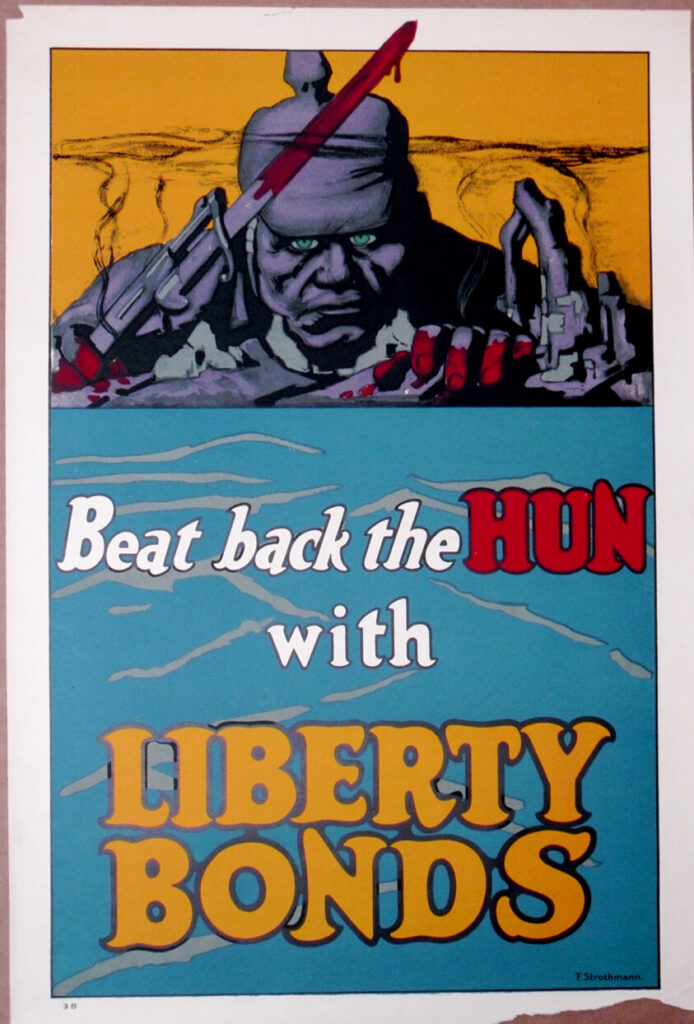
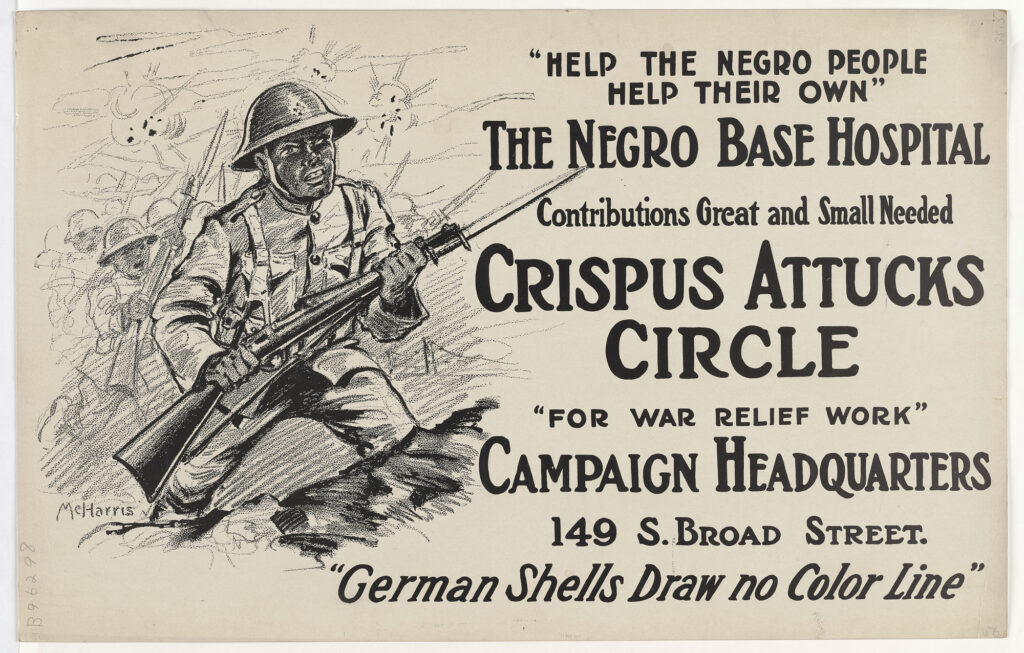
Representation of Women
Posters depicted women as motherly or sexualized feminine figures or masculine workers. Feminine women as motherly figures were a direct response to concerns about nurses seducing soldiers during the war.
Women were sexualized to appeal to the male gaze, even offering the male viewer a sexual reward for obeying the poster. Other posters sexualized women and their call to action was also directed at women, a confusing message for the female viewer.1
Finally, some posters depicted women workers who were dressed masculinely. Women were encouraged to work at home to fill the jobs left by men. They were also encouraged to join the military in background roles (away from violence). This poster shows how traditionally masculine jobs and labor were separated from femininity.
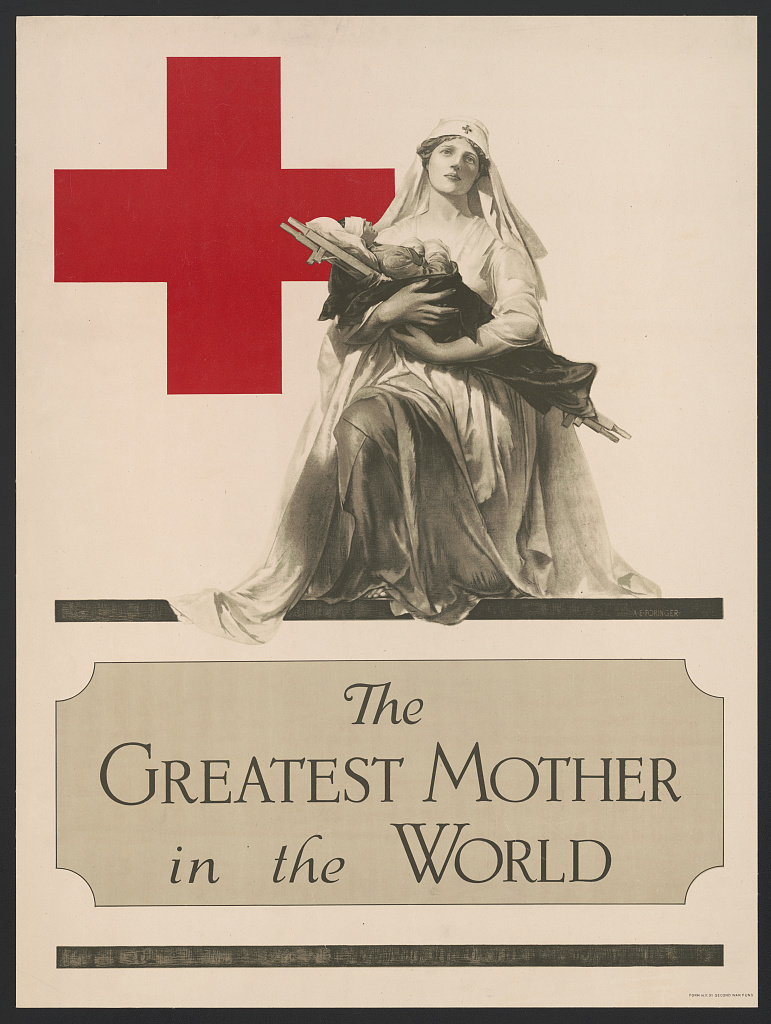
. [?] Photograph. Retrieved from the Library of Congress, <www.loc.gov/item/94513568/>.
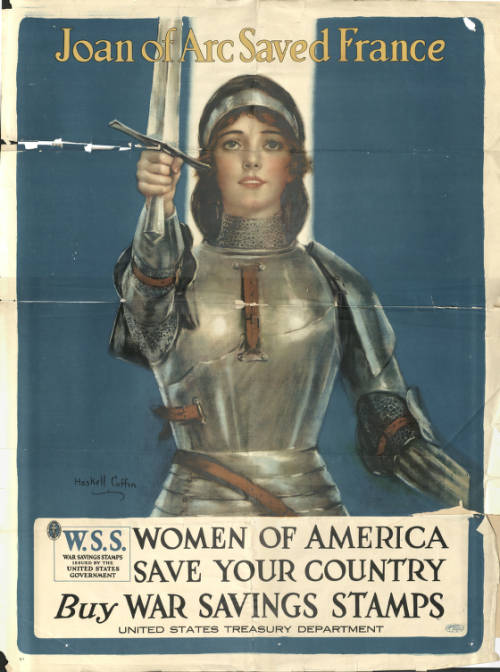
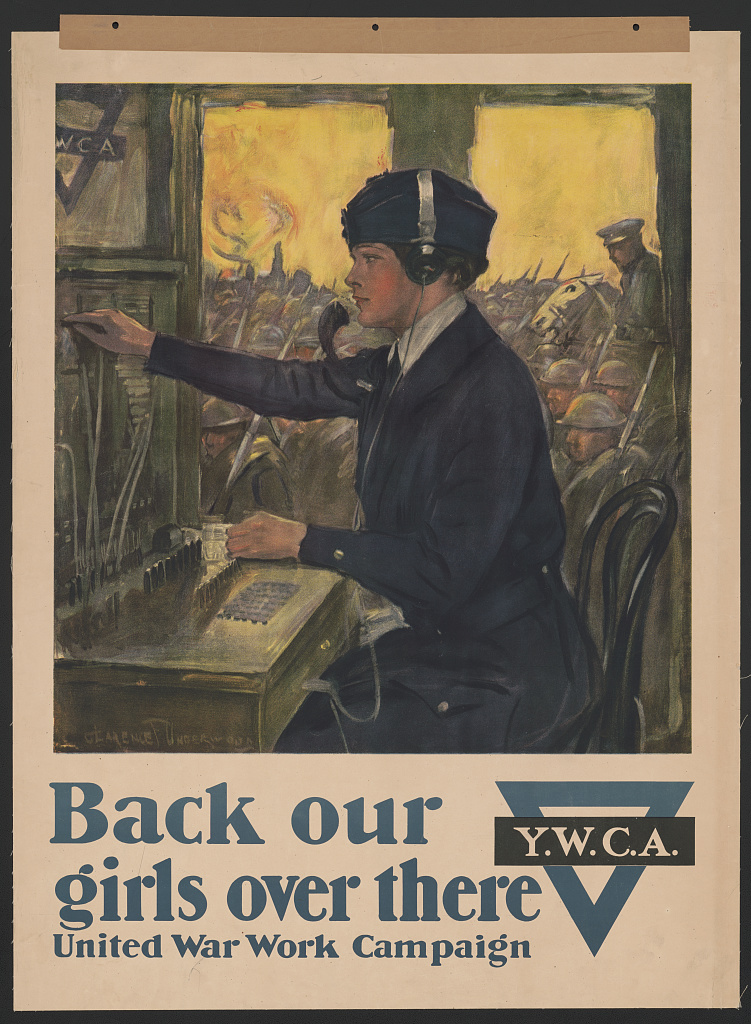
. Photograph. Retrieved from the Library of Congress, <www.loc.gov/item/00652158/>.
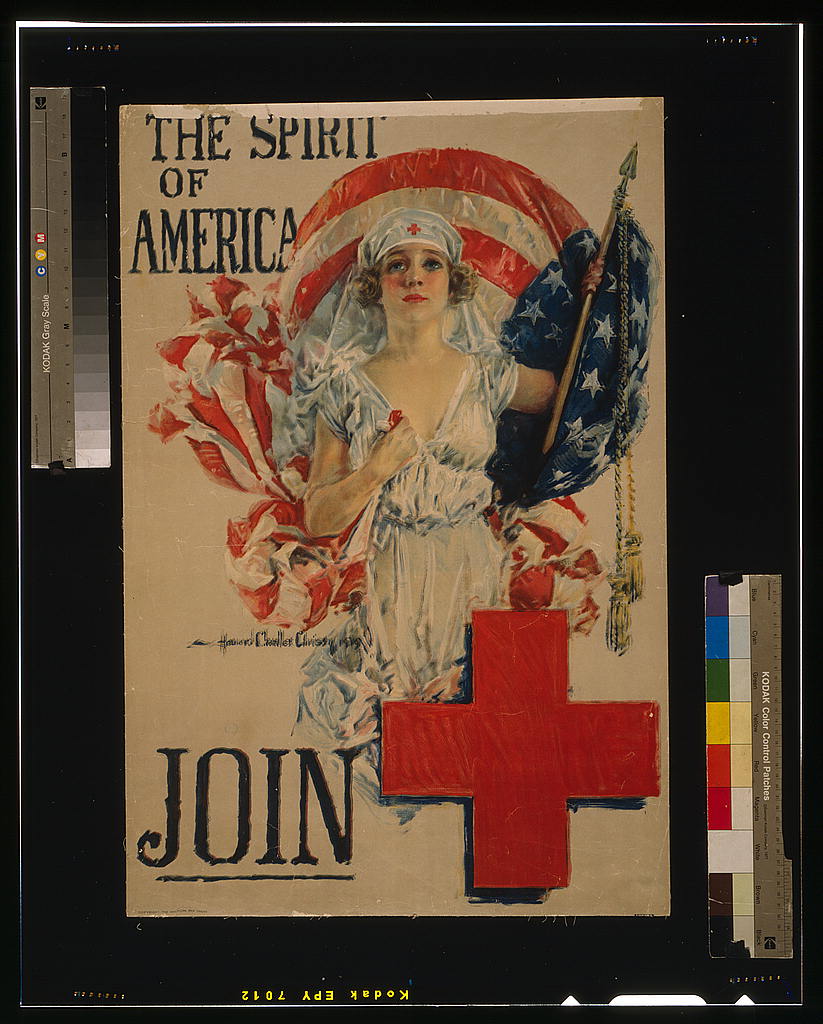
. Photograph. Retrieved from the Library of Congress, <www.loc.gov/item/2002708938/>.
Role of Economics
The U.S. government was primarily concerned with funding for the war and the food shortage. Many propaganda posters were advertisements for war bonds. War bonds were a major source of money for the war, and the U.S. needed them after Britain could no longer fund the Allies and the U.S. stepped in.
Europe faced food shortages, and soldiers suffered. This meant victory was postponed and even threatened. The government, in response, asked civilians through posters to use flour substitutions like corn and to grow their own vegetables. This way, more food could be sent overseas.
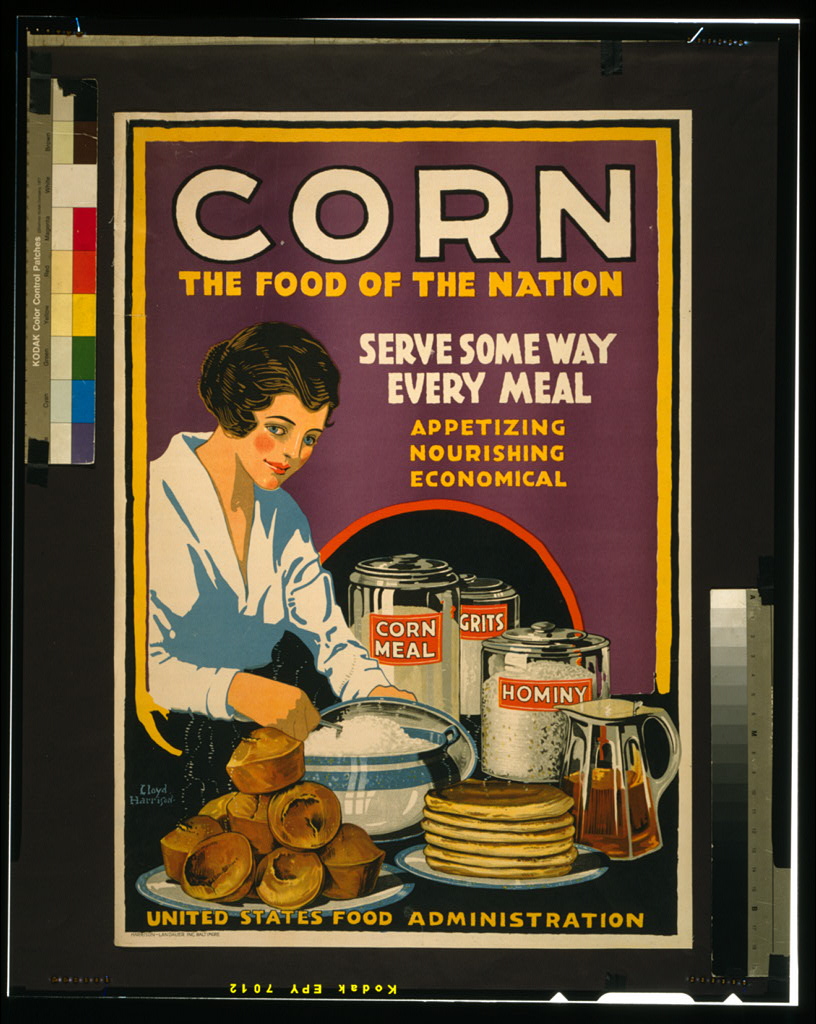
. Photograph. Retrieved from the Library of Congress, <www.loc.gov/item/2002711987/>.
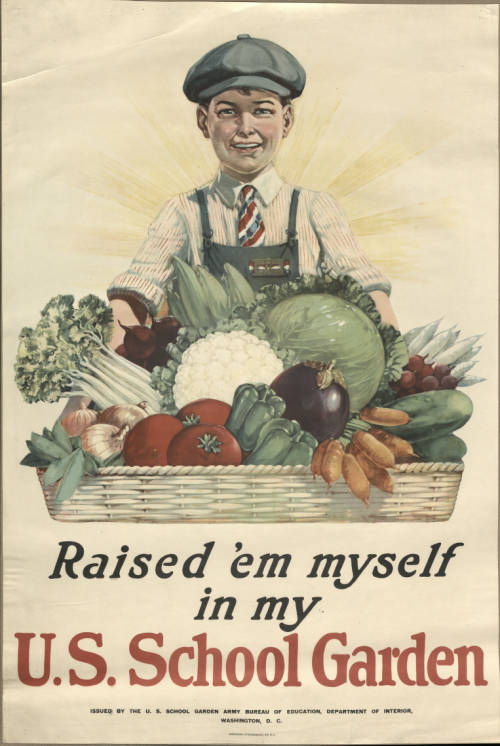
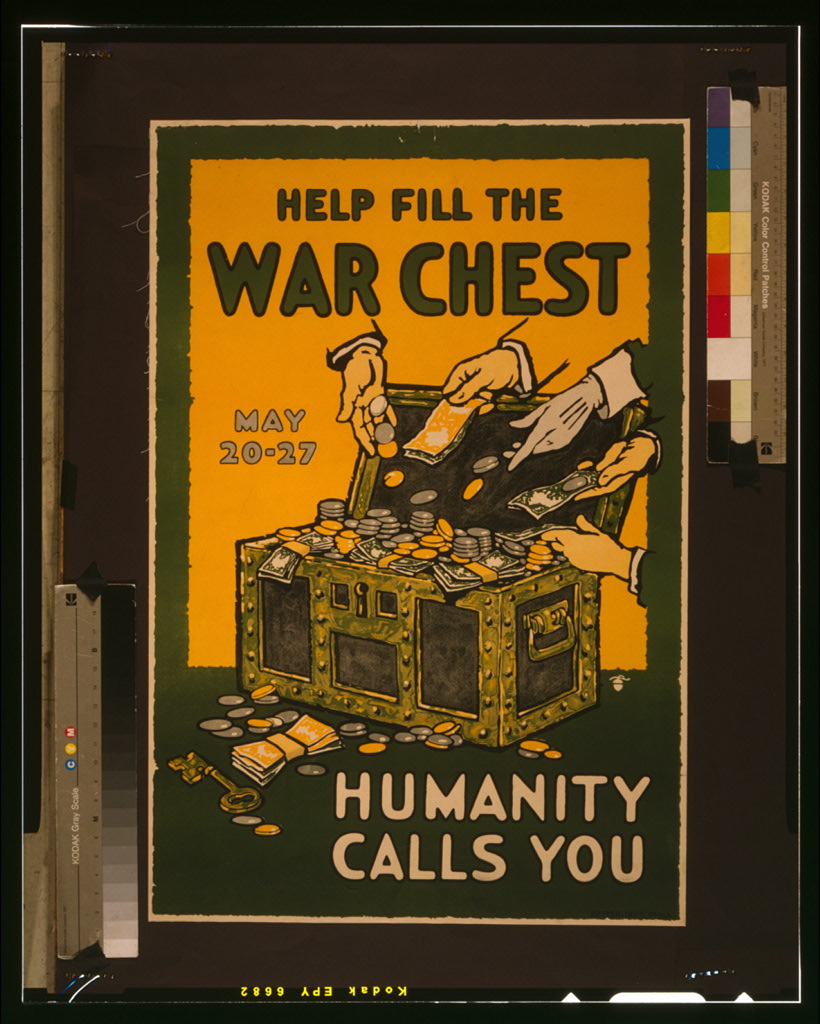
. Photograph. Retrieved from the Library of Congress, <www.loc.gov/item/2002699398/>.
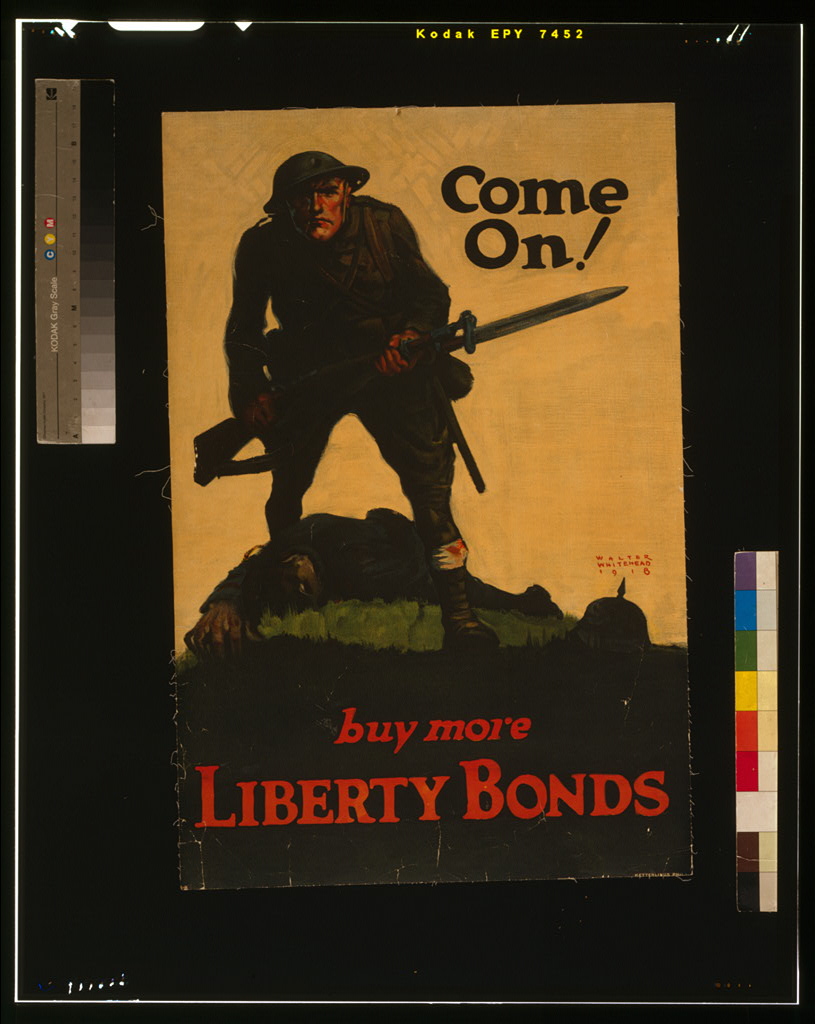
. [Philadelphia: Ketterlinus] Photograph. Retrieved from the Library of Congress, <www.loc.gov/item/2003652828/>.